 |
 |
 |
| |
Use of antidiabetic and lipid-lowering medications
associated with lower scores of liver fibrosis biomarkers
in non-alcoholic steatohepatitis (NASH) patients
|
| |
| |
EASL 2023 june 21-24 vienna
Jun Wang1, Dora Ding1, Xiaorong Shao1, Lily Ma1, Jun Xu1,
Jason Melehani1, Lisa Boyette1, Timothy R. Watkins1, Catherine Jia1, Vlad Malkov1, Andrew Billin1, Shahed Iqbal1. 1Gilead Sciences, Inc., United States
program abstract
Background and aims: The effects of antidiabetic or lipid-lowering drug use on liver fibrosis biomarkers in NASH patients are not well documented. We investigated the associations between use of antidiabetic or lipid-lowering drugs and blood liver fibrosis biomar-kers. Additionally, we assessed if the associations vary by patient's genetic predisposition to NASH.
Method: We conducted a cross-sectional analysis of baseline data from two completed phase III trials of NASH patients with bridging fibrosis (NCT03053050, N = 785) or compensated cirrhosis (NCT03053063, N = 864). Use of antidiabetic (metformin, GLP-1RA, Pioglitazone, SGLT2 inhibitors and DPP4 inhibitors) and lipid-lowering (statins and fibrates) drugs were obtained from trial baseline data. Among patients who provided blood samples for sequencing (N = 1077), a polygenic risk score (PRS) for NASH was derived for those of European ancestry (N = 742) using 6 variants from prior genome-wide association or exome sequencing studies: PNPLA3, TM6SF2, HSD17B13, GCKR, MBOAT7 and LEPR. Outcomes included composite scores measured at baseline: Fibrosis 4 (FIB-4), AST to platelet ratio index (APRI) and Enhanced Liver Fibrosis (ELF). Linear regression models were used, adjusting for age, sex, race, BMI, HbA1C and triglyceride.
Results: Study participants (N = 1649) were predominantly ≥50 years old (82%), female (59%) and White (75%). About 61% (N = 1008) of patients used any antidiabetic drugs, most of whom used Metformin alone or in combination (901/1008, 89%). Among patients who used lipid-lowering drugs (N = 750), the majority used statins (657/750, 88%). Overall, use of any antidiabetic or any lipid-lowering drugs was inversely associated with all biomarkers and the associations were stronger among those using both types of drugs (Figure). Compared to patients who used neither drug, patients using both drugs had an average 0.34 (95% Confidence Interval [CI] = -0.47, -0.20) lower ELF, 0.53 (95%CI = -0.74, -0.32) lower FIB-4 and 0.27 (95%CI = -0.37, -0.18) lower APRI scores. Among patients of genetically inferred European ancestry (N = 742), the associations were stronger in those with high PRS (>median PRS; N = 364) than those with low PRS (≤median PRS; N = 378) for FIB-4 (interaction p = 0.01) or APRI (interaction p = 0.004). Use of both drugs was significantly associated with an average 0.50 lower FIB-4 (95%CI = -0.92, -0.07) in patients with high PRS while no such association in patients with low PRS. Similar patterns were seen for APRI. However, there was no statistically significant interaction for ELF.
Conclusion: Use of antidiabetic and lipid-lowering drugs was inversely associated with biomarkers of liver fibrosis. Among patients of European ancestry, stronger associations were observed in those at high genetic risk of NASH development and progression. Prospective studies may provide further insights into potential benefits of these drugs.
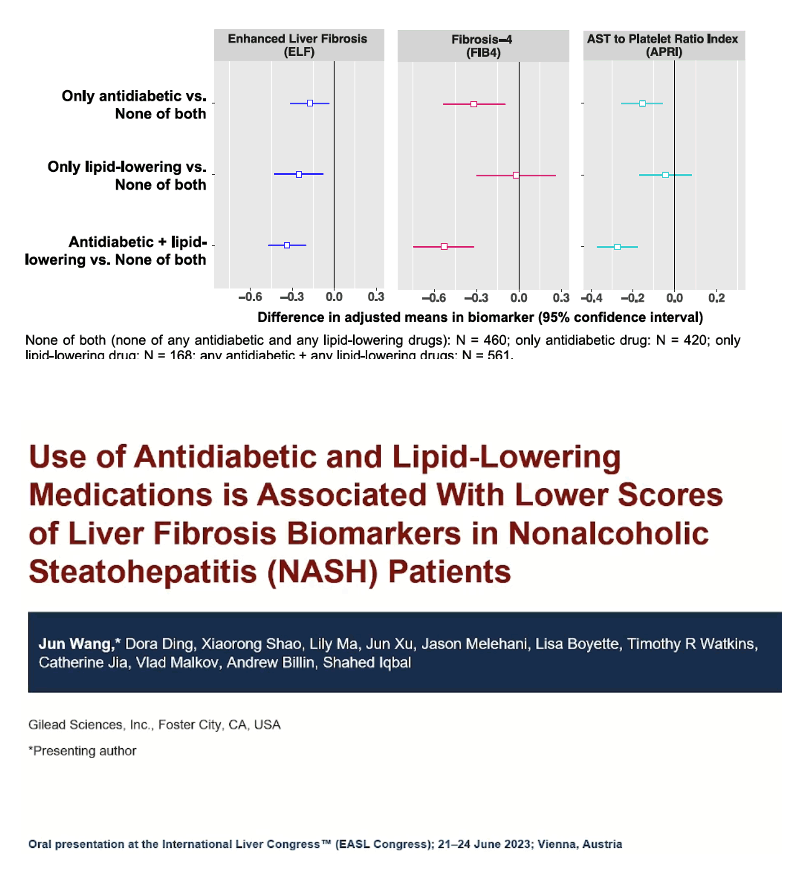
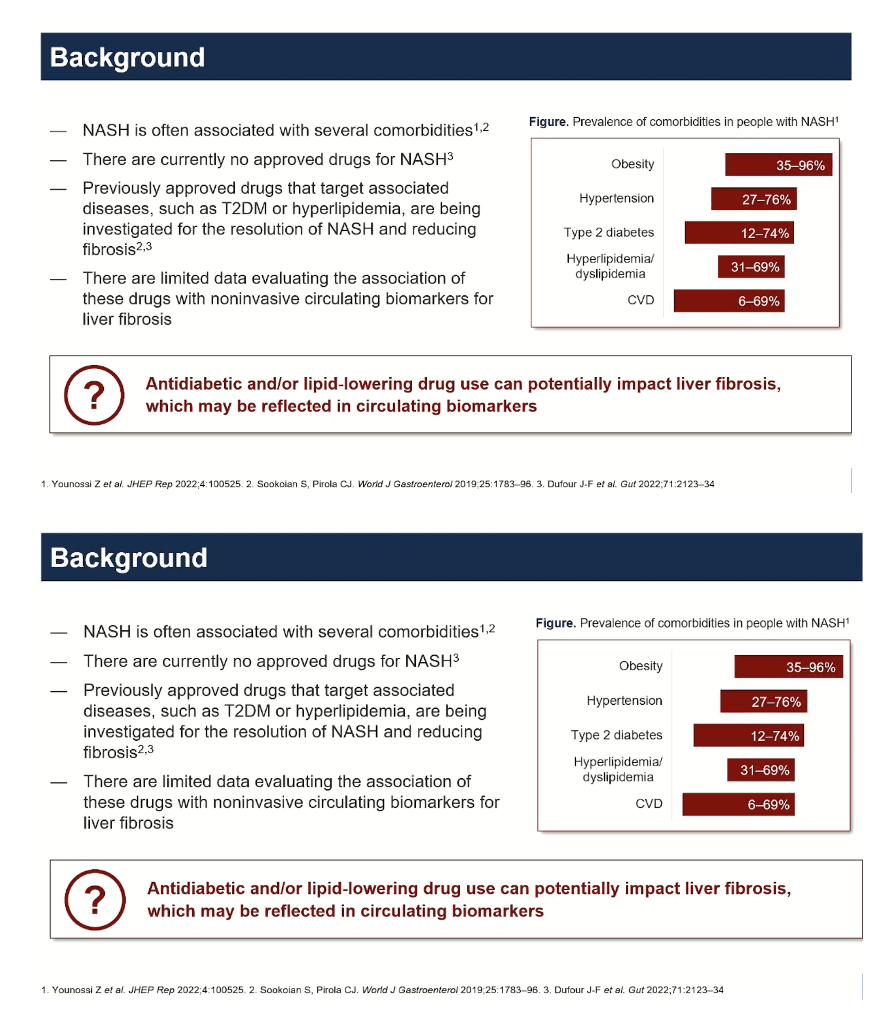
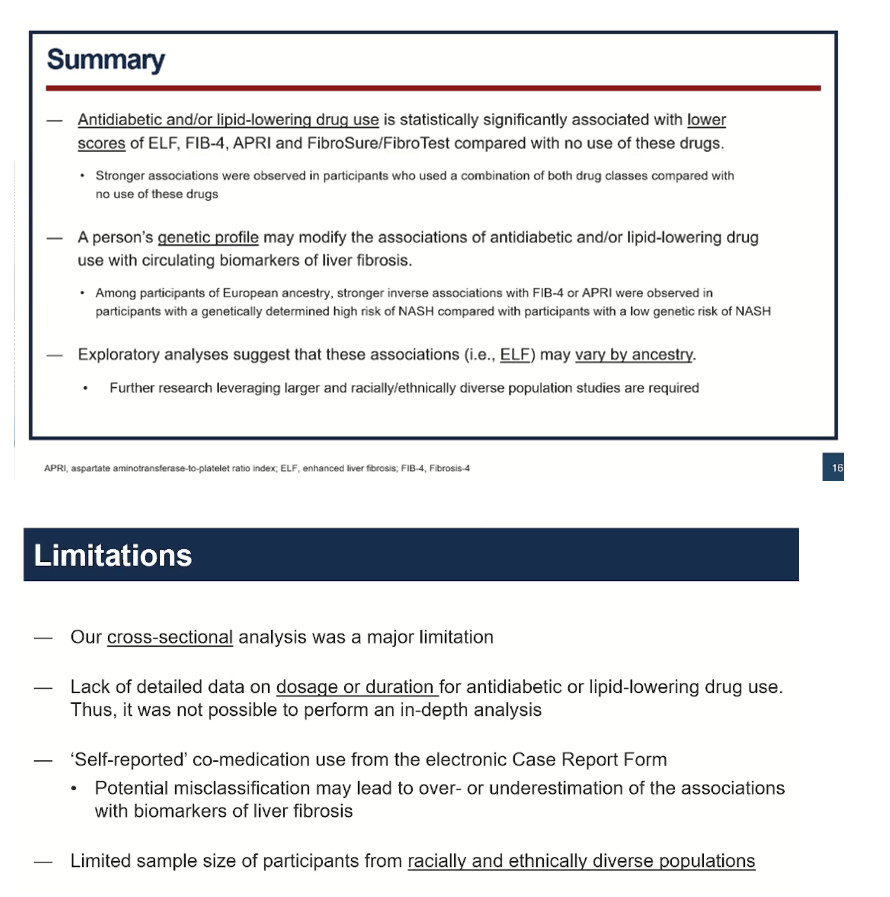
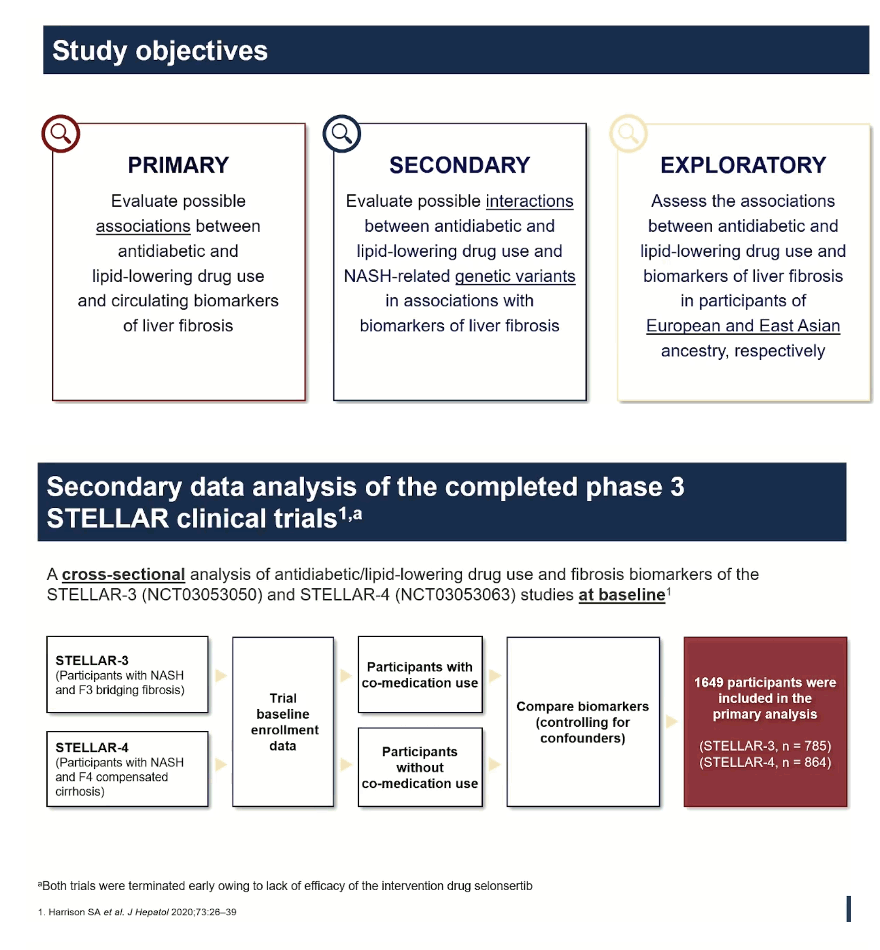
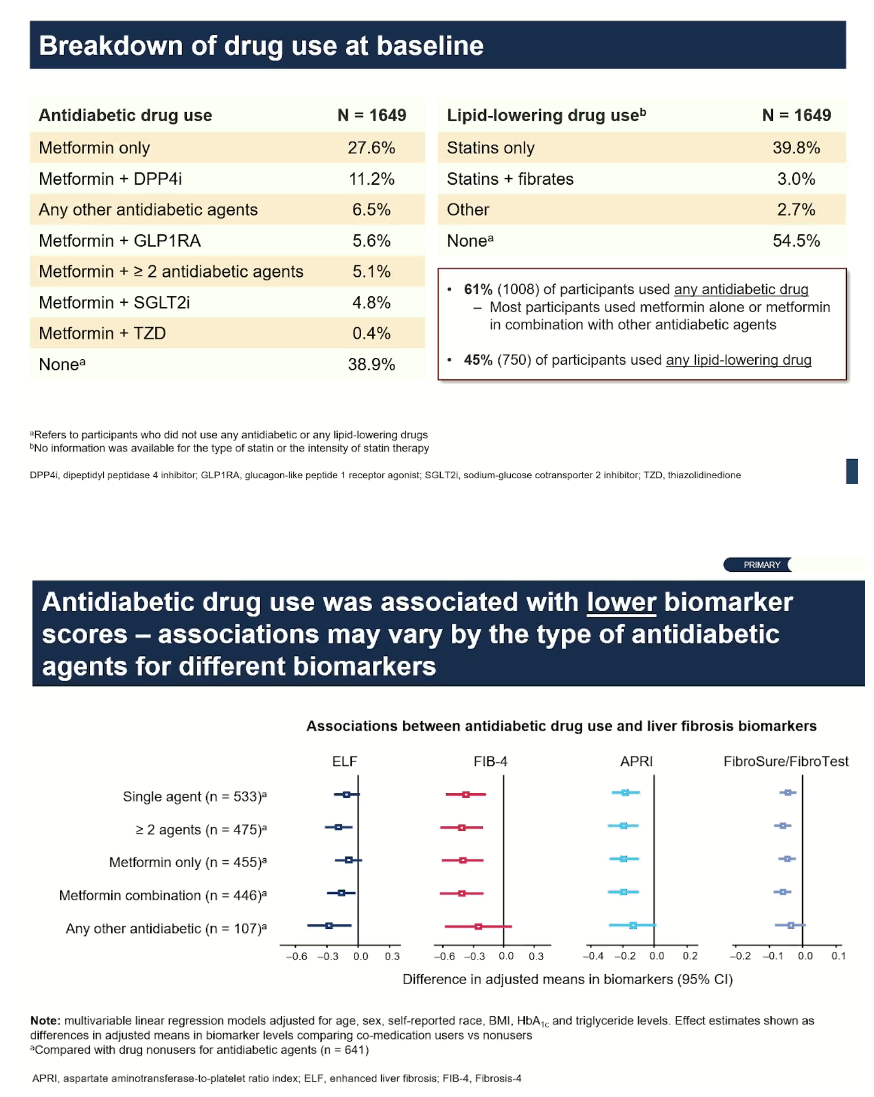
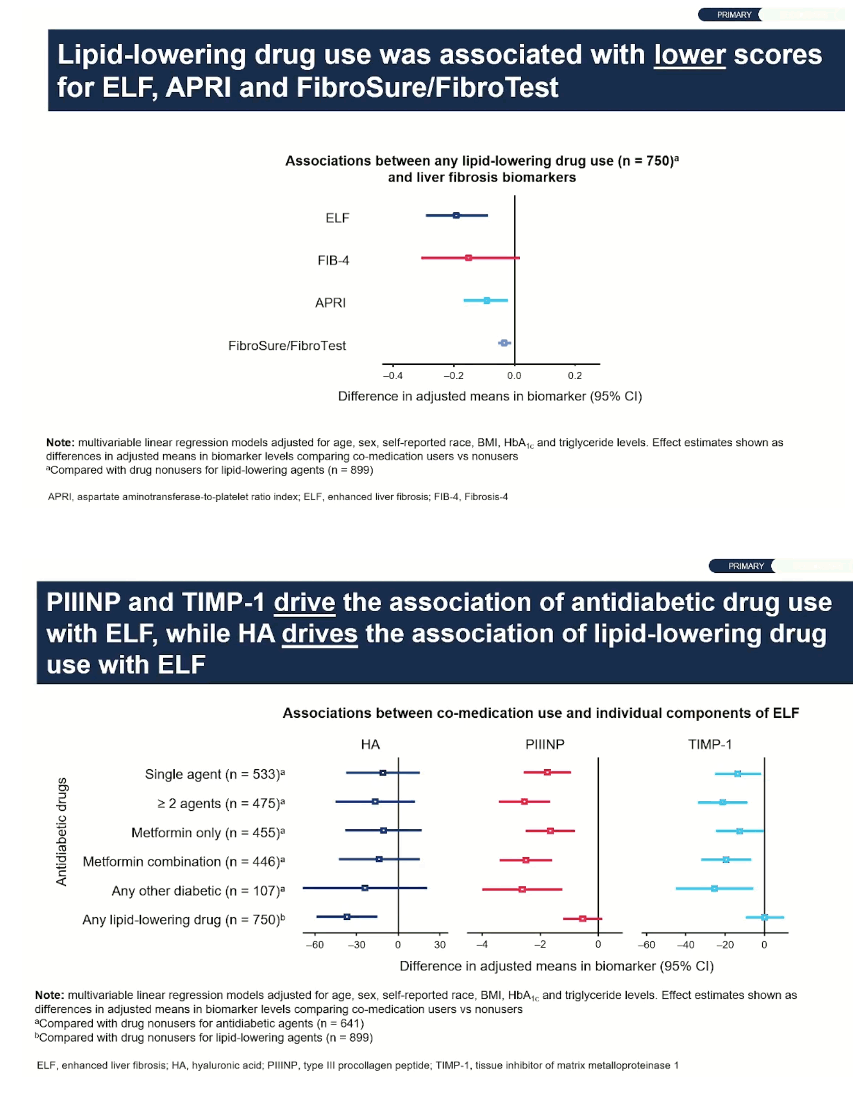
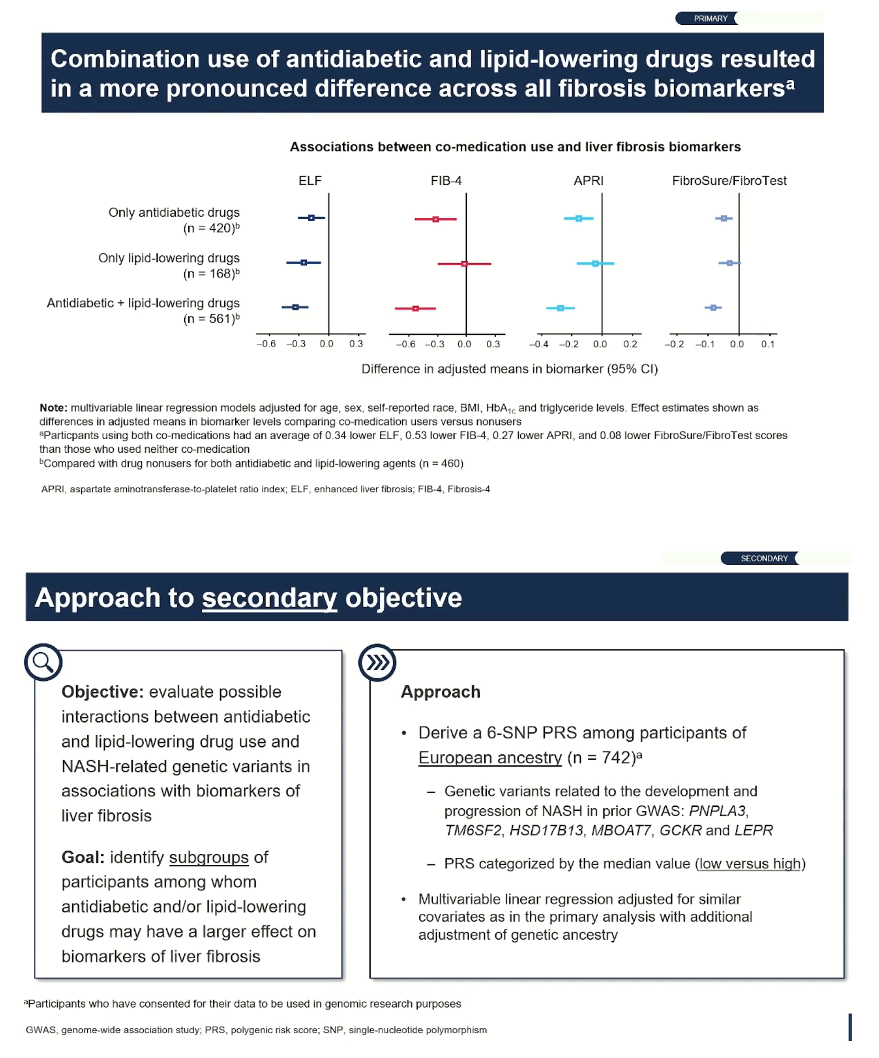
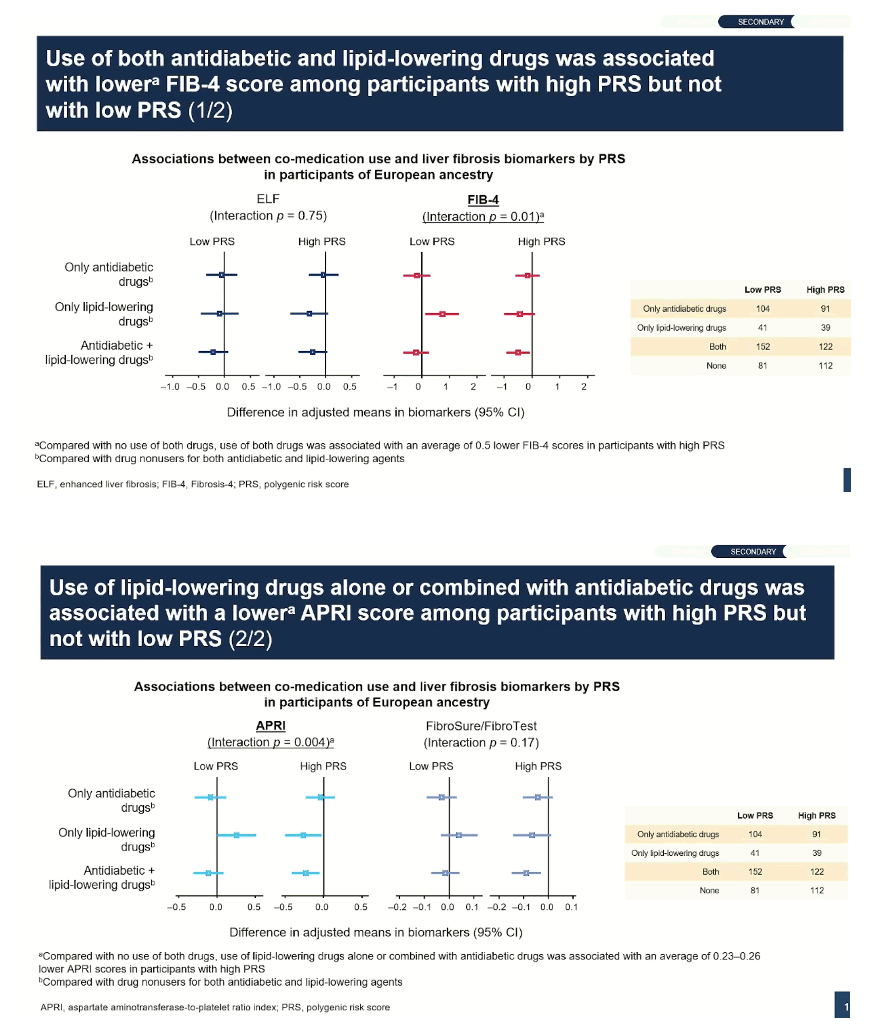
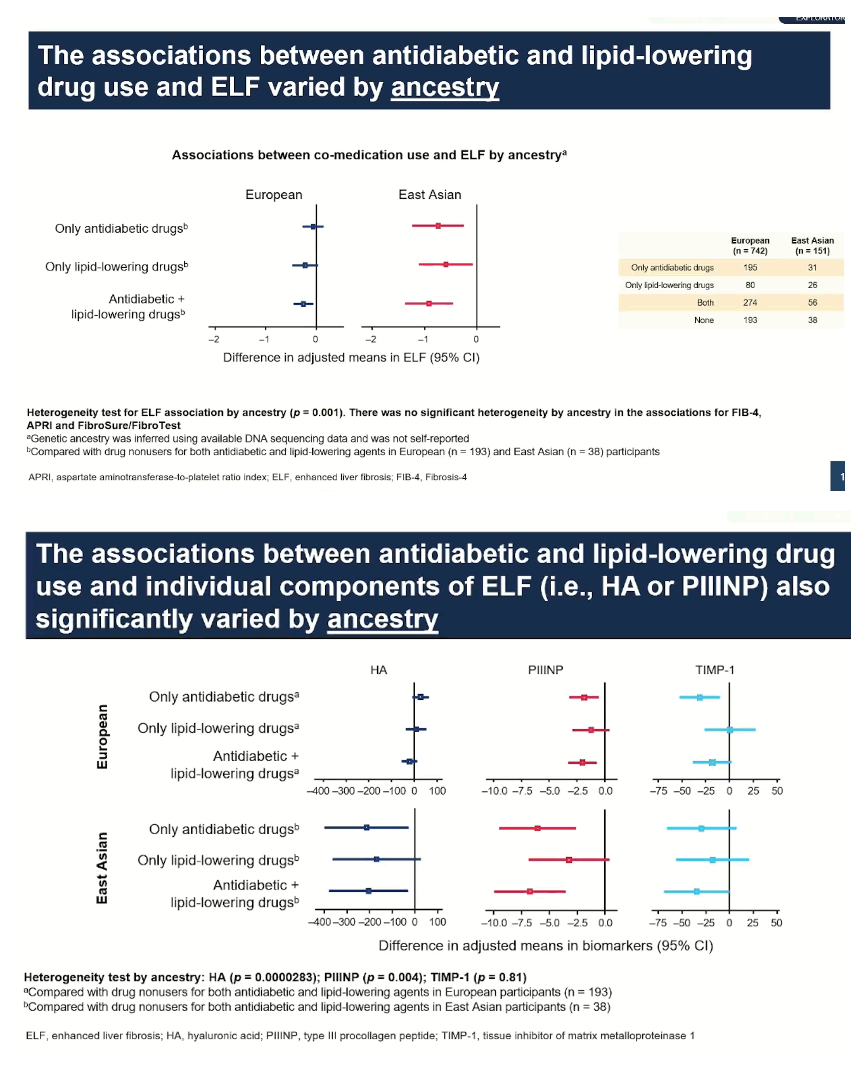
|
| |
|
 |
 |
|
|